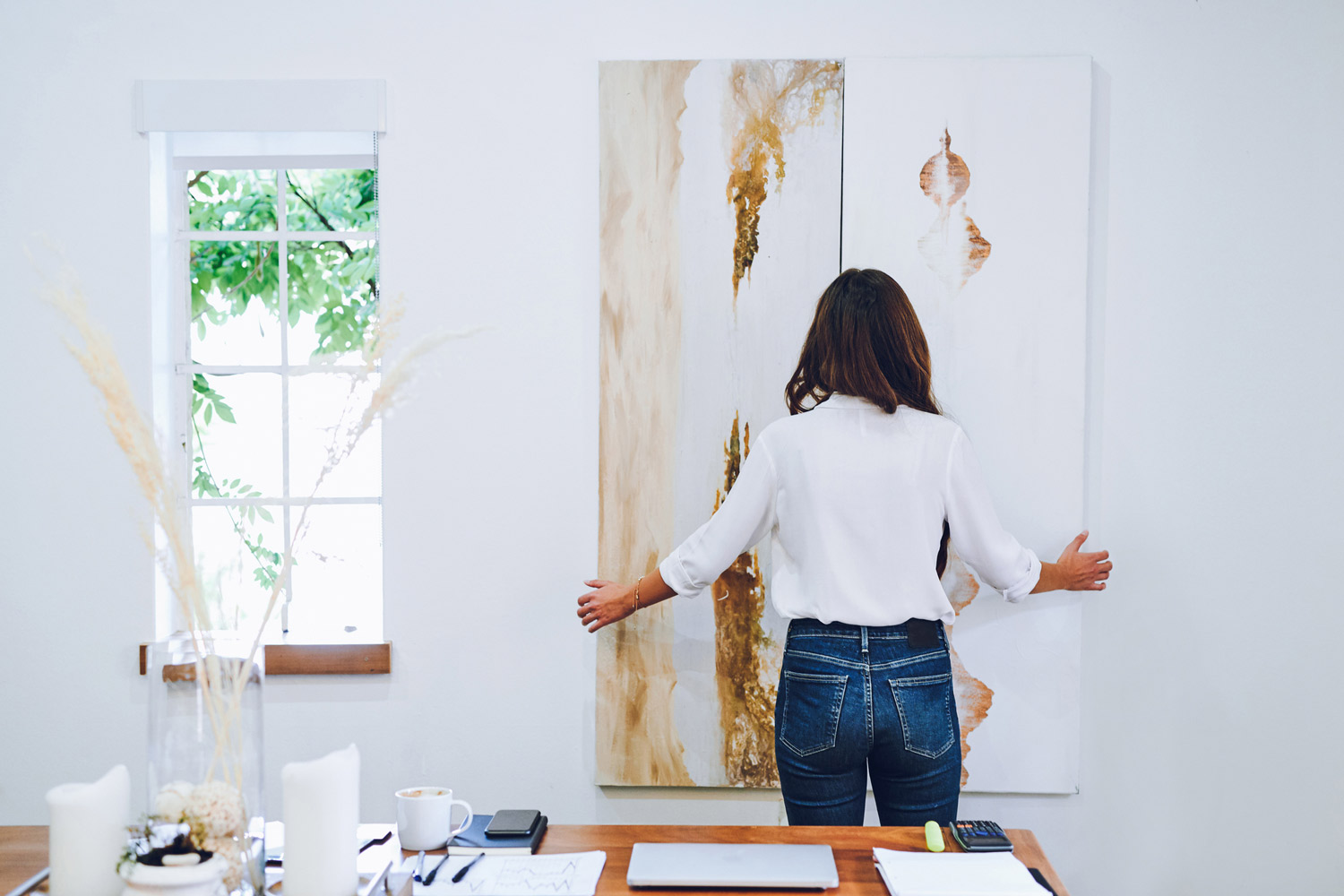Art, which is often forgotten, can play a significant role in the working environment: it affects the mood, productivity and creativity of employees, creates an aesthetically pleasing environment and improves the company’s image in the eyes of outsiders.
Interesting paintings, photographs, murals or sculptures can become a source of visual inspiration and encourage creative solutions to problems. Art can also contribute to creating a positive atmosphere, reducing stress and improving the general well-being of employees. These are the results of Viking’s 2019 survey amongst its employees: 53% of them stated that they were happier in the presence of paintings in the office.
Art and productivity
Over the past two decades, many companies have applied the principles of Lean Six Sigma methodology to the extreme, eliminating everything “superfluous” from workspaces to reduce waste and limit errors. No photos, plants or non-standard furnishings: in short, the furthest we can imagine from resimercial style.
Environments that are designed this way are aseptic and almost oppressive, and science proves it. According to a study by Dr Craig Knight of Exter University, people working in “enriched environments” (containing plants and photographs) are 17% more productive than those working in totally lean environments.
The same research showed that in the same office, for the same number of tasks assigned, those who had the possibility to customise their workstation were 32% more productive than their counterparts with no such option.
How to choose artwork for a workspace
When we talk about common spaces there is art and art, and the choice cannot be made through impulse buying. Here are some useful tips.
1. Always choose while thinking about the brand
What is the first impression a visitor should have? And what impact should art have within meeting rooms? The colours, the subjects and the origin of the artwork must be aligned with the corporate guidelines, because they represent a real business card for the company.
2. Based on the budget, identify locations
What are your company’s key locations? Identify them and estimate how much you can spend on each one, based on the size of the wall and the importance of the space.
3. Include employees
When people can share their opinion, productivity is positively affected. It’s therefore useful to ask employees for feedback when choosing art for operative offices and areas, either through a small brainstorming session or an anonymous collection of ideas.
4. Explore the territory
Among the various goals of ESG strategies is the social role of the company in the community in which it operates. A great way to engage with the territory is to choose local artists, giving them the opportunity to present their work to a wider audience.
Choosing a print or painting for the office is not an insignificant activity, given the strong impact it can have on working life and the external perception of the company. As in any area of design, the selection of artwork must be made by evaluating many different factors, from brand image to employee preferences. Only by doing so can the result be both effective and in line with the available budget.

